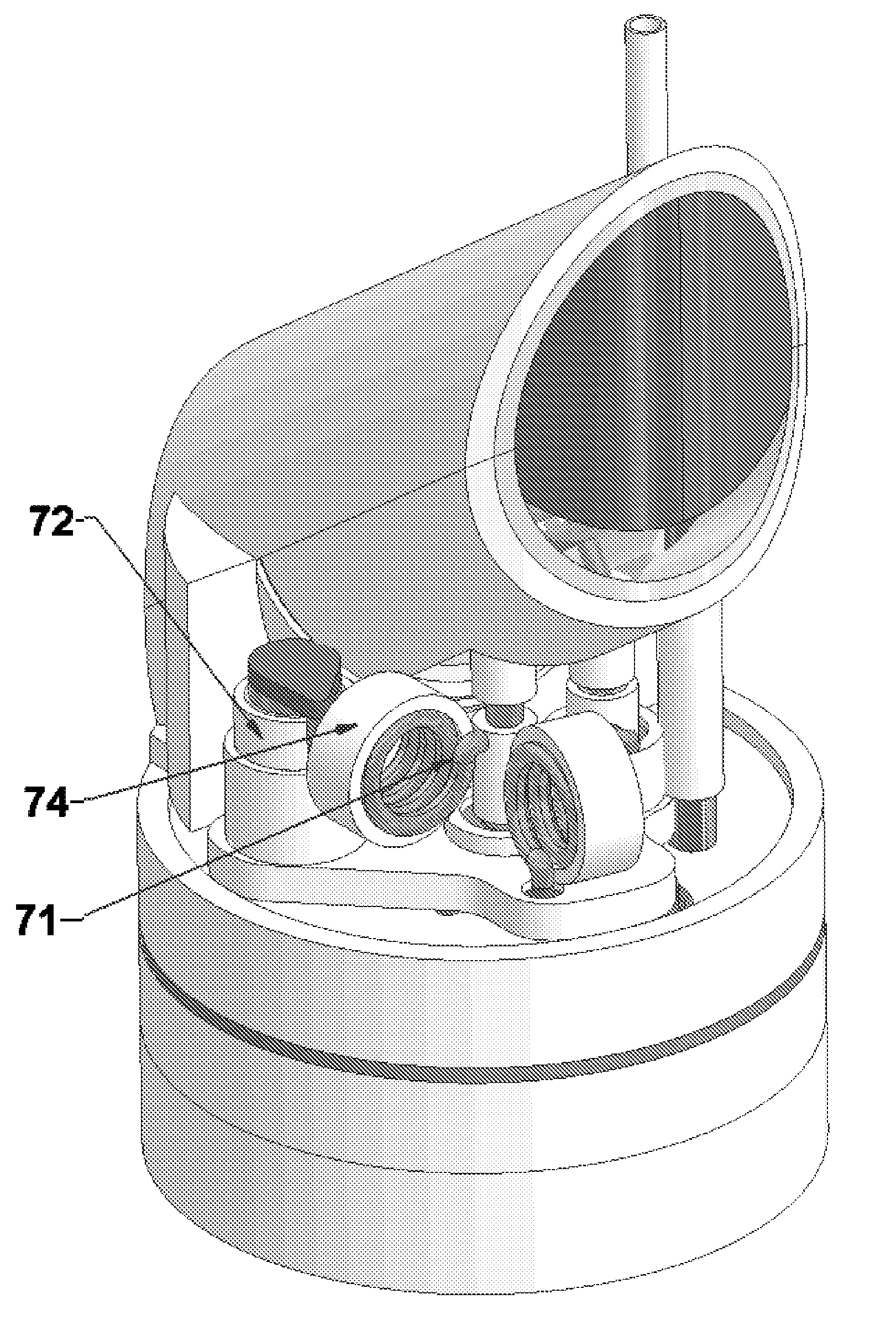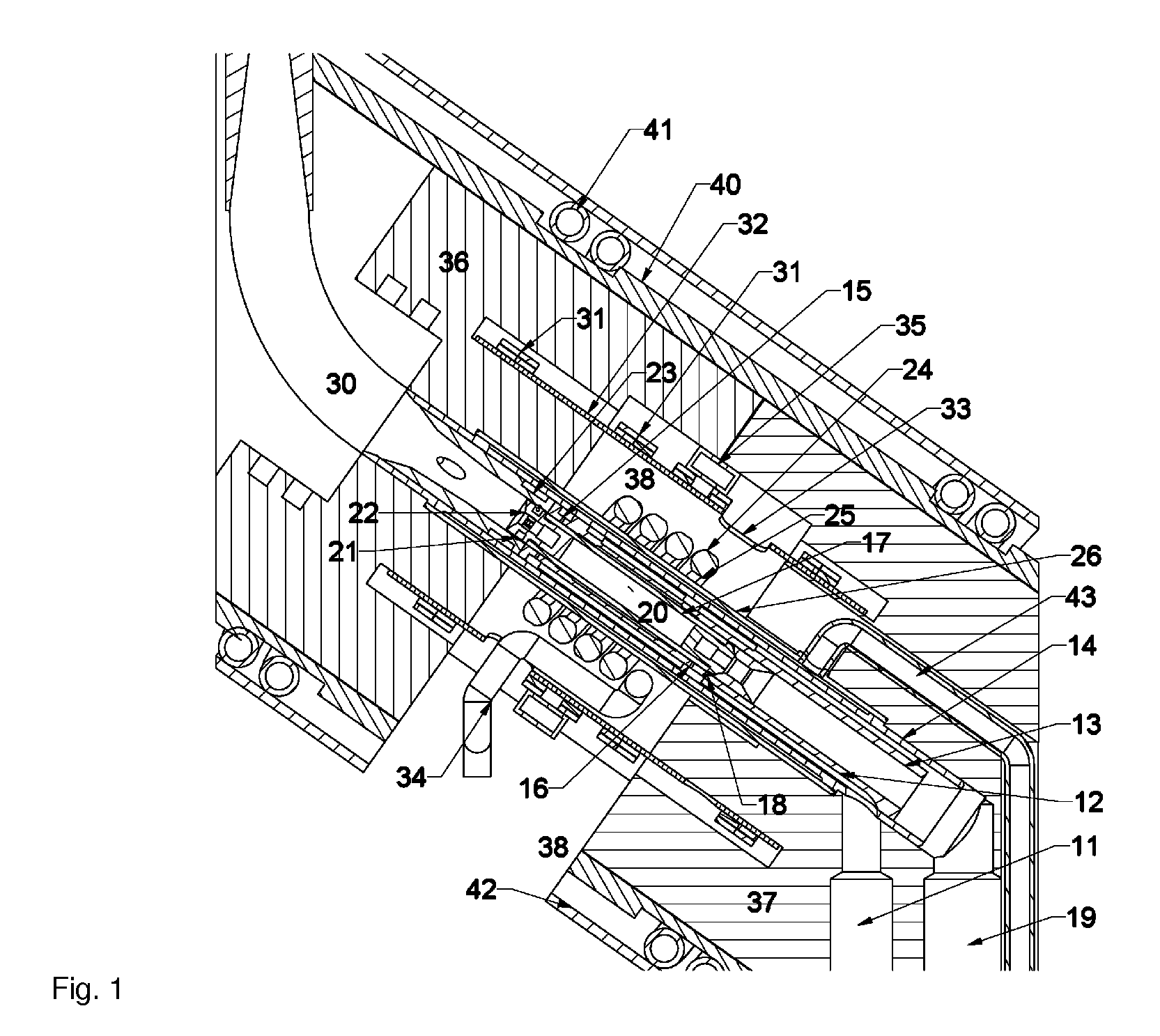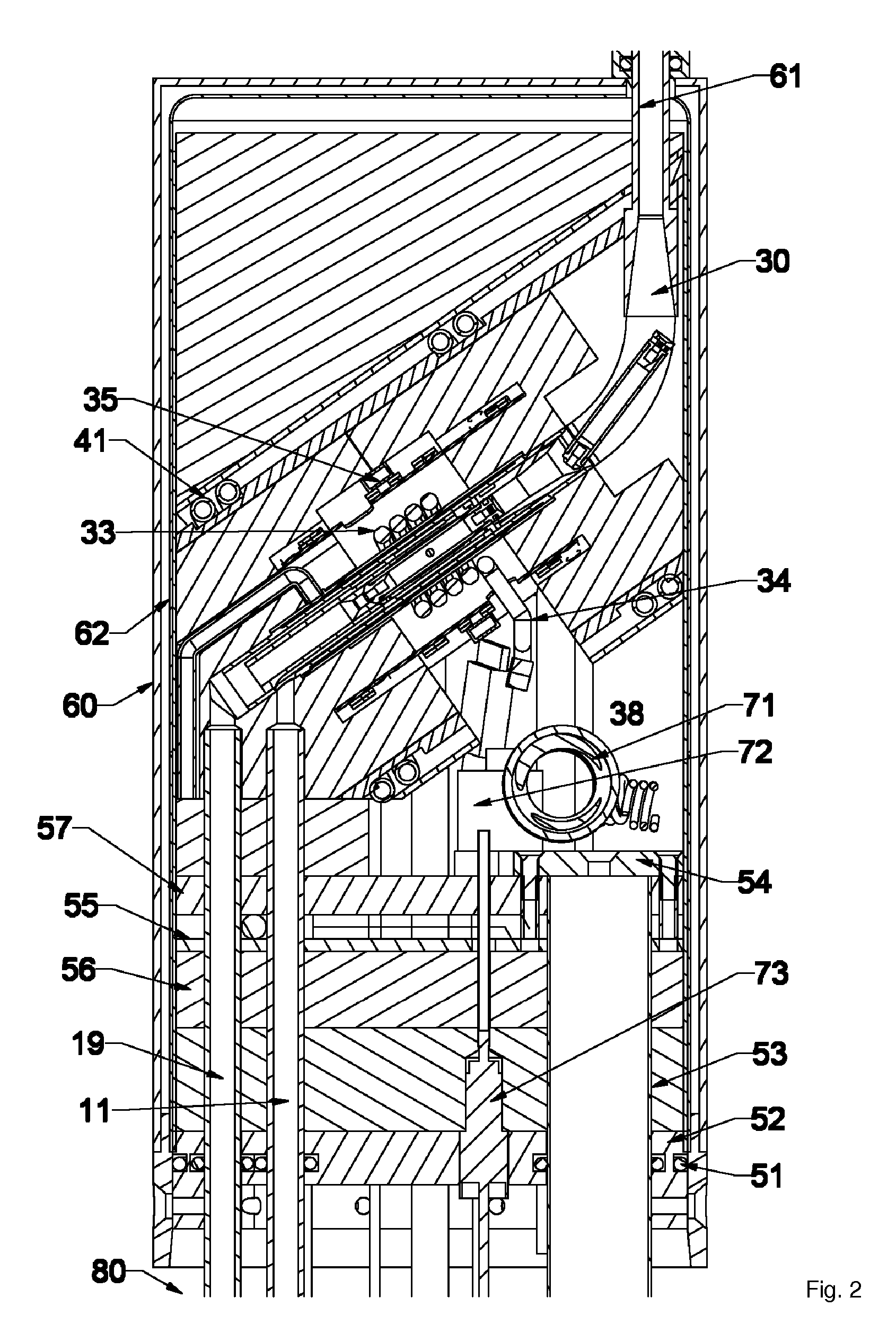NMR CryoMAS Probe for High-field Wide-bore Magnets
a cryomas probe and magnet technology, applied in magnetic measurements, instruments, measurement devices, etc., can solve the problems of difficult cooling of sample coils, unsuitable use of helium for spinner bearing and drive gases, etc., to prevent the risk of degradation, the heat transfer coefficient of dense helium at low temperatures is very high
- Summary
- Abstract
- Description
- Claims
- Application Information
AI Technical Summary
Benefits of technology
Problems solved by technology
Method used
Image
Examples
Embodiment Construction
[0019]FIG. 1 depicts a view in the XZ plane, roughly to scale, of a representative ceramic dewared spinner assembly suitable for a CryoMAS probe. Warm bearing gas may be supplied through a small metallic dewar 11 at just the rear end and ducted internally in a channel 12 between the innermost sleeve, identified as the zirconia spinner stator 13, and the inner zirconia dewar wall 14 to the bearing orifices 15, 16 near both ends of the ceramic rotor 17 and to the inflow Bernoulli bearing orifices 18 that form the axial bearing at the lower end of the rotor. The bearing gas temperature may be well below or well above room temperature, heated and sensed according to the prior art. Exhaust from the axial bearing and the lower bearing orifices 16 vents axially and then downward through a small metallic bearing exhaust dewar 19.
[0020] The ceramic rotor 17 containing the warm sample 20 is driven by warm nitrogen gas from drive nozzles 21 engaging a radial-inflow microturbine 22 attached to...
PUM
 Login to View More
Login to View More Abstract
Description
Claims
Application Information
 Login to View More
Login to View More - R&D
- Intellectual Property
- Life Sciences
- Materials
- Tech Scout
- Unparalleled Data Quality
- Higher Quality Content
- 60% Fewer Hallucinations
Browse by: Latest US Patents, China's latest patents, Technical Efficacy Thesaurus, Application Domain, Technology Topic, Popular Technical Reports.
© 2025 PatSnap. All rights reserved.Legal|Privacy policy|Modern Slavery Act Transparency Statement|Sitemap|About US| Contact US: help@patsnap.com



